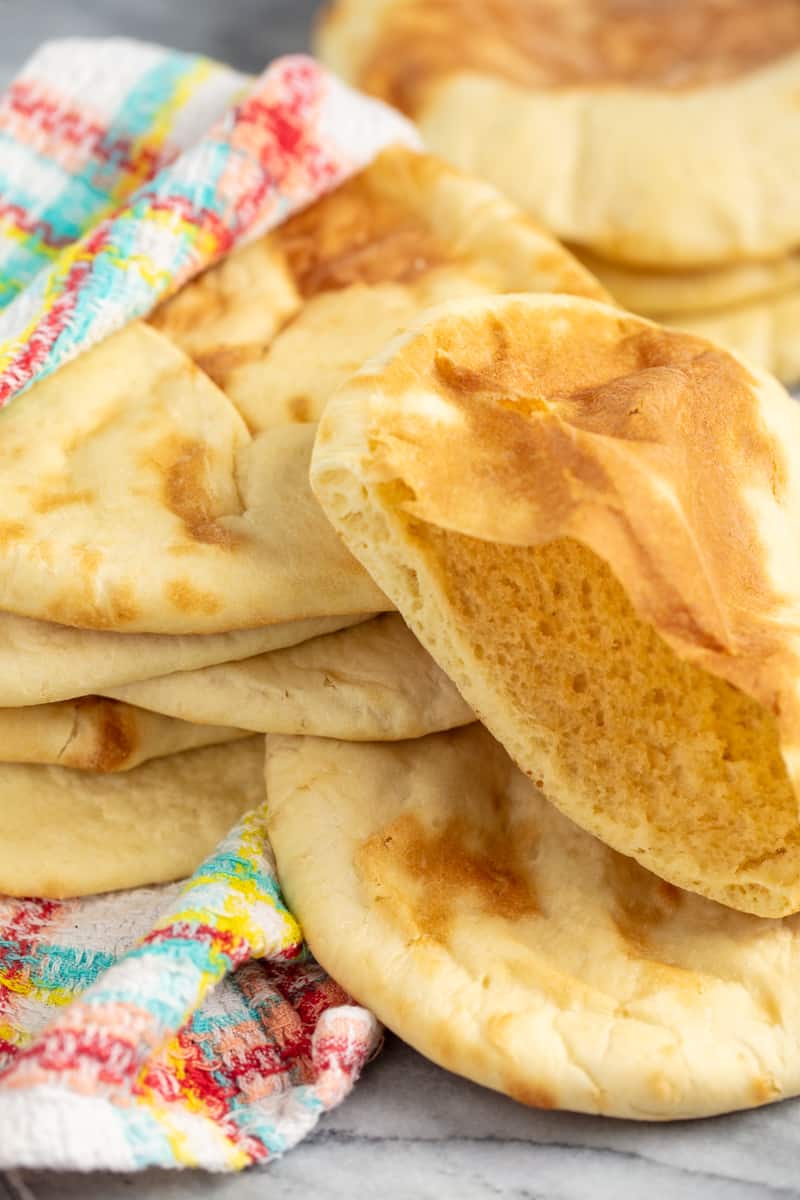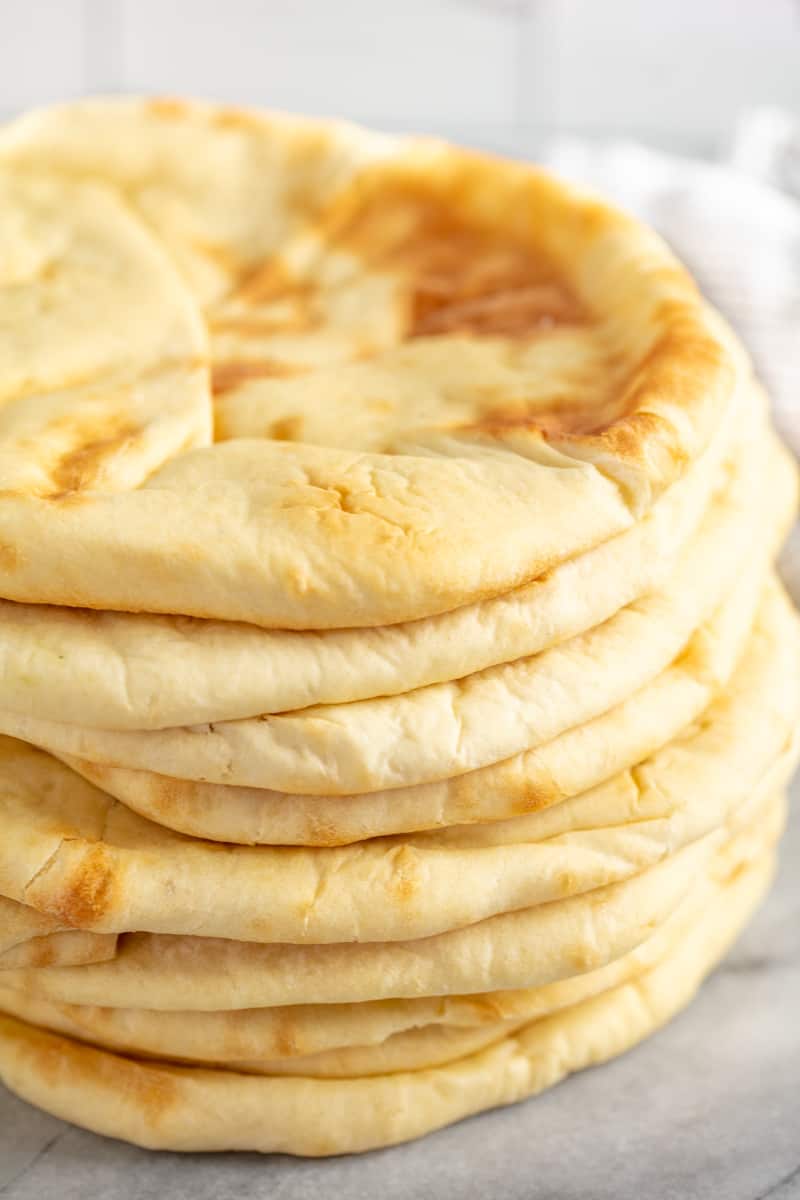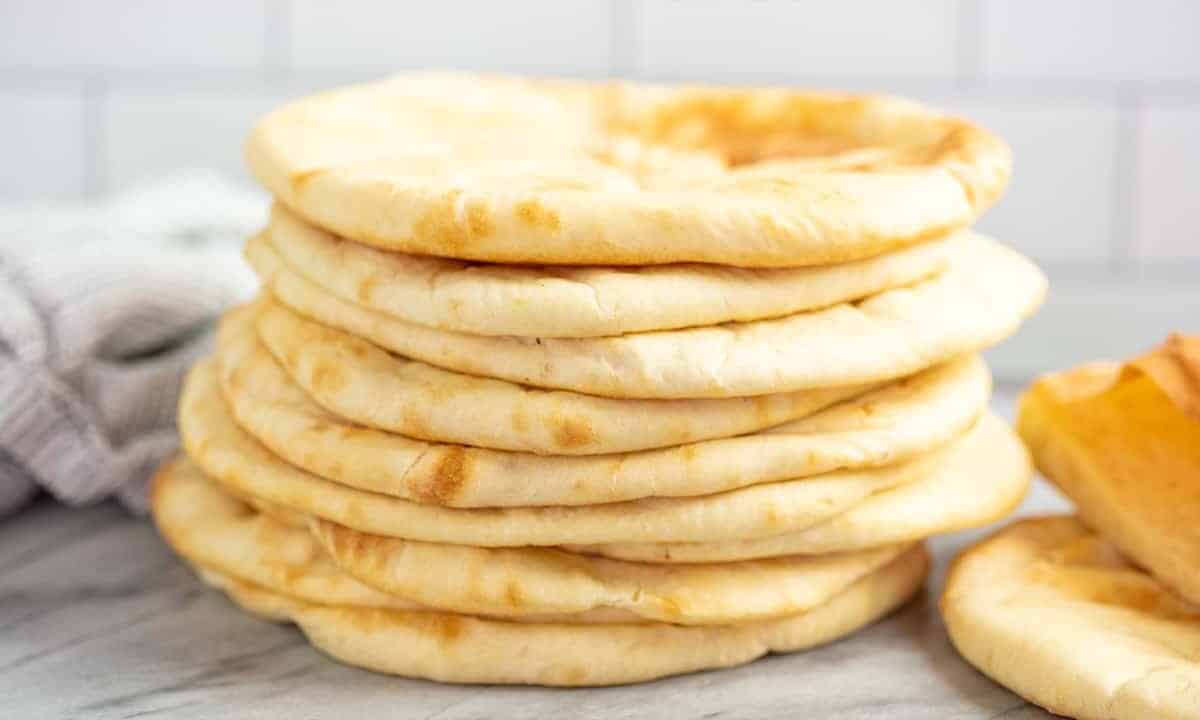Making your own homemade pita bread is both easy and inexpensive. No need to pay the grocery store markup. Fresh is best anyway!

Making your own pita bread is such a smart thing to do. Bread is always the same…mix, rise, shape, bake with maybe a few twists and turns along the way. Pita bread is simple to make, puffs up like a balloon, and like most other breads, it is best enjoyed fresh.
What is the difference between naan and pita bread?
Both naan and pita are what are considered flatbreads, but they are very different. The ingredients used to make each of them are unique. Pita bread usually has yeast, sugar, flour, salt, and olive oil, while Naan bread has many of those ingredients plus eggs, butter, and yogurt. These different ingredients are what makes them both unique in taste and texture.
Do I have to have a baking stone to make pita bread?
While a baking stone produces the best results, you can also use a regular baking sheet. Another option is to skip the oven all together and cook your pita bread on the stovetop. To do this you’ll need to preheat a large, heavy skillet over high heat. Working one piece at a time, you can cook the pita bread in this hot skillet for about 2-3 minutes per side. Be careful not to burn them.
Do I have to have a stand mixer to make pita bread?
No! You do not need a stand mixer to make pita bread. Instead, you can easily stir the dough in a large mixing bowl. As you add the flour in it will become harder to stir. When you can no longer stir, simply switch to using your hands and knead the dough until it is soft and pliable.
How many pita breads does this recipe make? What size are they?
This recipe makes between 8 and 12 pita breads, depending on how big you’d like them to be. This recipe will make approximately twelve 8-inch pita breads. If you want larger pita breads you can make approximately ten 10-inch pita breads, or eight 12-inch pita breads. For most uses, we recommend making 8-inch or 10-inch pitas.

Watch the video below where Rachel will walk you through every step of this recipe. Sometimes it helps to have a visual, and we’ve always got you covered with our cooking show. You can find the complete collection of recipes on YouTube, Facebook Watch, or our Facebook Page, or right here on our website with their corresponding recipes.


Came out perfectly. My first attempt and my wife couldn’t stop raving about it – said that’s pity better than what we buy.
My kids loved it too
Perfect! I don’t have a mixer so did it by hand and it came out just the same. Thank you.
Thank you! These came out perfect!
Hi! This looks delicious but I cannot eat wheat. Can this be turned gluten free?
We have not tested this recipe with gluten free flour, and because of that, cannot recommend it. If you do try it, let us know how it turns out!
Hi SAHC ?Your recipe turned out perfectly, however I did attempt to do a gluten-free powder replacement for Hubby & the result devastated, please take caution. Love the blog & thanks for the amazing pitas!
+100!
You never said you put the stone in the oven. On the bottom of the oven? Or on one of the racks?
You want to put the baking stone on one of your racks in the oven when you set it to preheat.
Can I use almond ora coconut flour
Non-wheat based flours will cook completely different. We have only tried this recipe with all purpose flour (wheat), so we can’t recommend a different flour.
Can these pittas be done on a stove in a frypan
Yes! You can make pitas on the stovetop in any hot skillet.
Can I use a sourdough starter or discard in place of a dry active yeast?
We have not tried this method, so we cannot recommend it. However, if you do give it a try, please let us know how it turns out!
Hi!
Can I freeze the dough? If so, what’s the maximum number of days?
Thanks.
Yes, you can. Follow the recipe through the first rise. Divide the dough, wrap in plastic wrap, place into a freezer-safe container and freeze for up to 3 months. When you’re ready to bake, let dough thaw overnight in the fridge, or for 2-3 hours at room temp. When it is thawed completely, roll out into rounds and continue with the recipe.
I’m wondering why my pita bread was so heavy after I baked it , they did not bubble up much , what happened?
Typically this means that either the dough wasn’t rolled thin enough, or the oven wasn’t hot enough/a baking stone wasn’t used.
I tried lots of different recipes for pita bread; for me, this is the best so far, I see no reason to carry on searching!